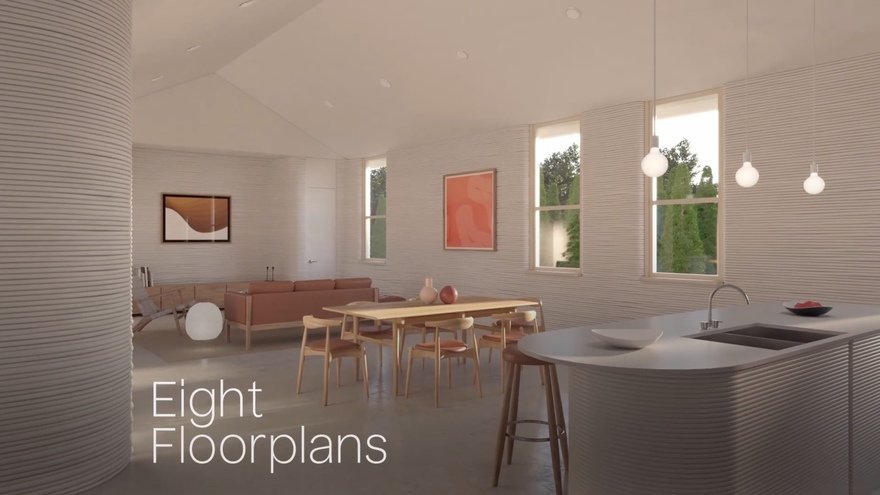BIG and Icon Collaborate on Entire Neighborhood of 3D-Printed Houses
Wolf Ranch, 100 solar-powered homes in a suburb of Austin
"BIG's architecture emerges out of a careful analysis of how contemporary life constantly evolves and changes," writes Bjarke Ingels Group. "BIG believes that by hitting the fertile overlap between pragmatic and utopia, architects can find the freedom to change the surface of our planet, to better fit contemporary life forms."
As the latest execution of that vision, BIG has designed an entire neighborhood of 3D-printed houses, to be built by construction technology Icon.



Sited in Georgetown, Texas, a suburb of Austin, the Wolf Ranch community will consist of 100 homes. All will be solar-powered, and all printed using Icon's Lavacrete, a concrete-like material that is squirted out of a nozzle and deposited in layers.

According to Icon, "each home's full wall system - including interior and exterior walls - are produced with less waste and with more design freedom."

That design freedom is apparently manifested by providing buyers with a choice of eight different floorplans and 24 different elevations, with square footage ranging from 1,574 to 2,112 square feet. (I say "apparently" because that doesn't sound terribly different to me from the options offered by your average McMansion developer.) The firms do not elucidate on what else the "design freedom" has yielded, but perhaps that will become obvious as the floorplan/elevation options become publicly available.



The Wolf Ranch community is already under construction, so apparently the floorplan/elevation choices are not provided to buyers in a built-to-order type of situation.




Reservations will open in 2023, and buyers shouldn't expect 3D printing to confer a cost savings: "Prices are anticipated to start from the mid-$400,000s," Icon writes.

-
o1Favorite This
-
Q3Comment
K
{Welcome
Create a Core77 Account
Already have an account? Sign In
By creating a Core77 account you confirm that you accept the Terms of Use
K
Reset Password
Please enter your email and we will send an email to reset your password.

Comments
My son is working on that project ! He started in high school 3D printing and now he is printing houses…
I like the idea of 3D printing, but this example makes it hard to get excited about it.
Yeah, if they wanted people's imaginations to get fired up they probably shouldn't have built a bunch of miniature office complex depression blocks.